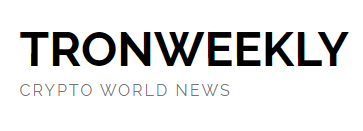March 13, 2025 by Bena Ilyas
- A trader lost $215K in a sophisticated MEV sandwich attack during a $220K stablecoin swap on Uniswap v3.
- An MEV bot front-ran the transaction, draining USDC liquidity and executing the swap at an inflated price, pocketing the difference.
- The same trader may have been repeatedly targeted in similar attacks, with at least six instances involving Aave and Uniswap.
A crypto investor made a huge loss after being hit by a sophisticated Maximum Extractable Value (MEV) sandwich attack in trying to execute a $220,764 stablecoin swap in Uniswap v3. In a matter of eight seconds, their USD Coin (USDC) balance was drained to just $5,271 in Tether (USDT) as a bot front-ran the trade, earning more than $215,500 in profits.
Blockchain data from Ethereum block explorers reveals that the attack was in the Uniswap v3 USDC-USDT stablecoin liquidity pool, in which approximately $19.8 million is locked. MEV bots exploit such pools by waiting for large trades and positioning their trades in such a way that they drain value from unsuspecting users.

In this instance, the MEV bot implemented a traditional front-running technique by sucking out all the available USDC stablecoin liquidity from the pool prior to the execution of the trader’s swap. After the order was fulfilled by the trader at a price that was artificially inflated, the bot replenished the pool immediately, earning a huge arbitrage profit
According to Michael Nadeau, founder of The DeFi Report, the attacker tipped Ethereum block builder “bob-the-builder.eth” a staggering $200,000 for successfully executing the exploit, leaving themselves with an $8,000 profit.
Is anyone safe using DeFi?
A user on @Uniswap v3 was just sandwiched attacked out of $216k while simply trying to swap $221k USDC to USDT.
Mind you, this was a pool that had over $35m of USDC and USDT it.
This is insane.
How did it happen?
An MEV bot front-ran the tx by… pic.twitter.com/cyzu4M6qfz
DeFi Researcher Uncovers MEV Exploit in Sandwich Attacks
DeFiac” theorized that the same trader most probably operating through several wallets has been repeatedly targeted. Citing internal tools, they claim the trader has been hit by at least six such sandwich attacks, all the funds having come from Aave’s lending platform before being sent through Uniswap.
Subsequent investigations verified that two more wallets were attacked by sandwiching on March 12 in nearly the same category of trades. Wallets “0xDDe…42a6D” and “0x999…1D215” lost by $138,838 and $128,003, respectively, in trades made in minutes following the $220,764 exchange.
Some crypto analysts speculate that these transactions could be part of a money laundering scheme rather than simple trading mistakes.
if you do happen to have illicit funds, you might build a highly MEV-conducive transaction, secretly forward it to an MEV bot, and allow them to arbitrage it in a bundle, said 0xngmi, DeFiLlama founder, adding that this would essentially “wash” crypto with little loss.
MEV Bots and Sandwich Attacks on Stablecoin Trades
Initially, critics blamed Uniswap for failing to prevent such attacks, but Nadeau later clarified that these transactions did not originate from Uniswap’s front-end interface which has built-in MEV protections and default slippage settings to counteract sandwich attacks.
Uniswap CEO Hayden Adams defended the platform’s security measures, pointing out that Uniswap’s official interface already incorporates safeguards against such exploits.
This is a reflection of the risk involved with decentralized exchanges and MEV abuse. Traders with large sums should utilize private mempools in a way that prevents front-running, set slippage caps in a way that prevents price manipulation, and trade through MEV-protected platforms like Uniswap’s front-end or alternative routing services.

With MEV bots growing increasingly sophisticated, awareness and strategic trade execution are essential for avoiding costly pitfalls in DeFi trading.
Related | Altseason Still Pending: Bitcoin Dominance Holds Strong as Crypto Market Awaits Catalyst

 5 months ago
22
5 months ago
22









 English (US) ·
English (US) ·